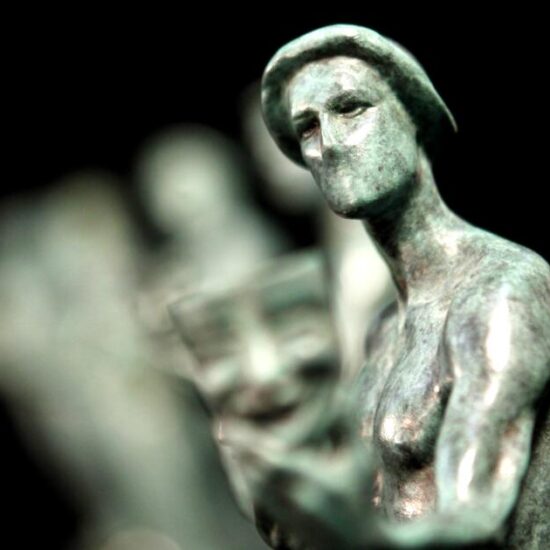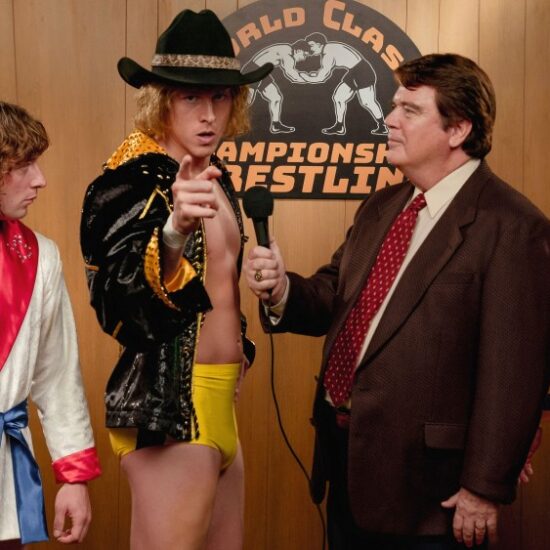Making a rom-com that cuts through the clutter these days can be a tall order. Once a regular date-night megaplex staple, most seem to wind up buried on streaming platforms, easily lost soon after their release. So it’s welcome when a filmmaker comes at the genre with admiration, reverence and ideas about how to make it appealing to a modern audience. In “Molli and Max in the Future,” writer-director Michael Lukk Litwak works from familiar incredients in crafting his story of two mismatched lovers who bicker and feud on their way to realizing that they were meant for each other. There’s fast-talking repartee, witty dialogue and fantastic chemistry between his leads Zosia Mamet and Aristotle Athar. It’s in what he chooses to surround his lead characters with, that he foibles the surefire setup.
Litwak’s clearly inspired by “When Harry Met Sally.” In fact, he lifts his story, structure and timeline straight from the 1989 classic: Two people meet by chance and over conversations in moving vehicles and restaurants form an antagonistic relationship that becomes a friendship over the years, all while trying to deny their attraction to one another. Unlike Sally and Harry, however, Molli and Max aren’t in Manhattan but rather in a future of galactic interdimensional worlds — though they retain the neuroses of verbose culturally aware urbanites.
Molli and Max travel in ships, one of them is able to fly while the other is half-human/half-fish. There’s actual magic, sentient robots and demigods in this future. Despite all this, their world is strikingly similar to America in the 2020s. There’s volatile politics and social unrest, a contentious election and a plague. All of this is presented in a heady mix of self-aware jokes and elaborate CGI (the film mostly amounts to two actors shot against greenscreen). The humor makes the world recognizable while the effects and production design tries to differentiate it. The whole endeavor works only half the time.
Mamet grounds the film in real emotions, cutting through the alien surroundings. While her winking, rapidfire delivery of lines lands her most of the laugh out moments, she’s well-matched by Athar, whose deadpan face and quiet disposition hints at why these two total opposites might find themselves attracted. As a Frankensteinian creation of Max’s, Erin Darke smartly sends up 1930s and 1940s screwball comedies, offering a unique riff on Rosalind Russell. Sadly, she’s not on-screen for much. The other characterizations of smaller roles are rather limp in comparison (mostly notably Michael Chernus as an obvious take on Donald Trump and Matteo Lane as an obnoxious TV host).
In trying to satirize the current political and social situation, the film comes up short. Elections as a TV reality show? Fish people, demigods and aliens instead of people of different ethnicities? The pandemic as a plague? The targets are obvious and easily recognizable, which makes the laughs come easy and quick without the audience having to work too much. However, that also lessens the bite of the satire despite some of the scenarios being genuinely funny. A lampoon of cults is smartly ridiculous, but why build a completely different world and set the story in an elaborate future when everything hits so close to home? The film could’ve grappled directly with race and class while retaining the comedy, if that’s the intention. Instead, it feels like avoidance.
Additionally, the worldbuilding is hampered by the paltry and stilted visuals. Tinted a purplish hue and sorely lacking in detail, with nary an eye-pleasing image in sight, the film’s design looks more like an ’80s music video than a fully inhabitable future. Hannah Kittell’s costumes have a familiar sheen but appear just off enough to be believable as futuristic.
Take away the sci-fi novelty, and all that’s left are those two people looking to connect. As in all romantic comedies, the film lives or dies by how much the audience is invested in the couple at the center. In crafting two believable characters, giving them witty banter and getting Mamet and Athar to inhabit them, Litwak succeeds. The rest feels hit or miss.










